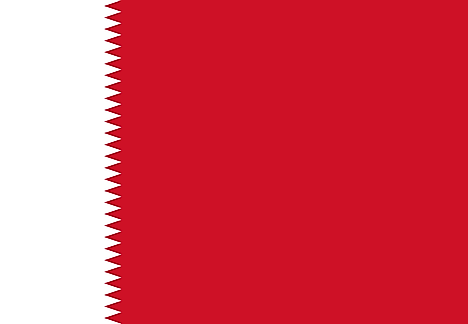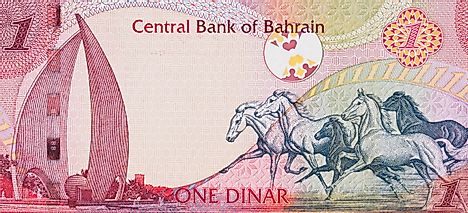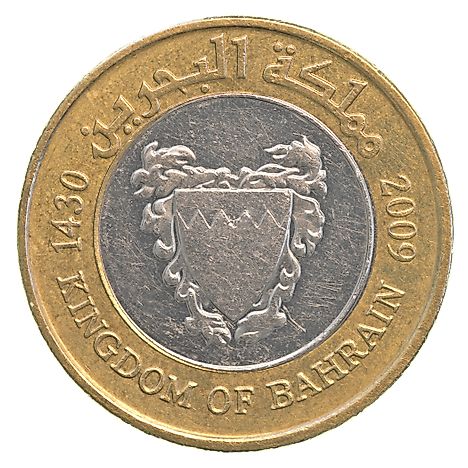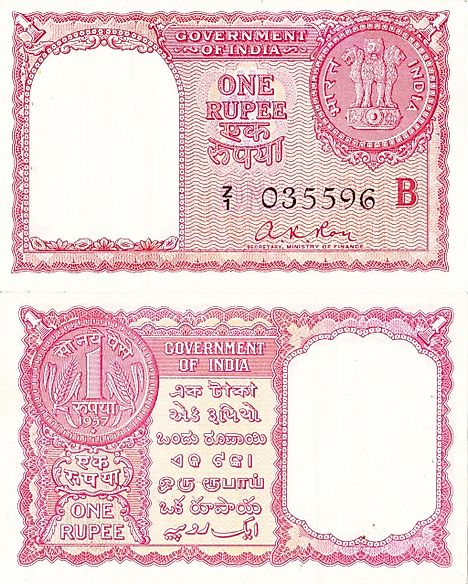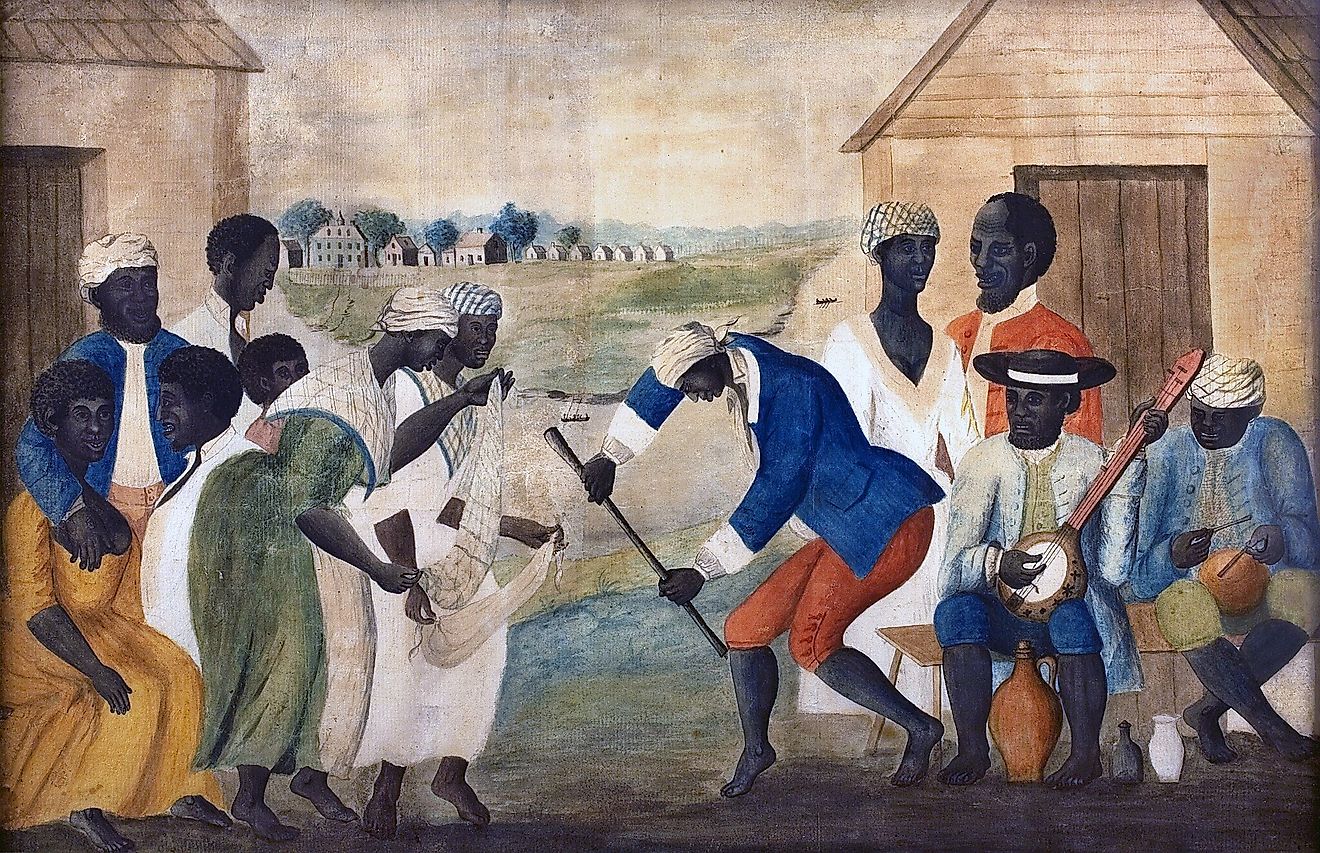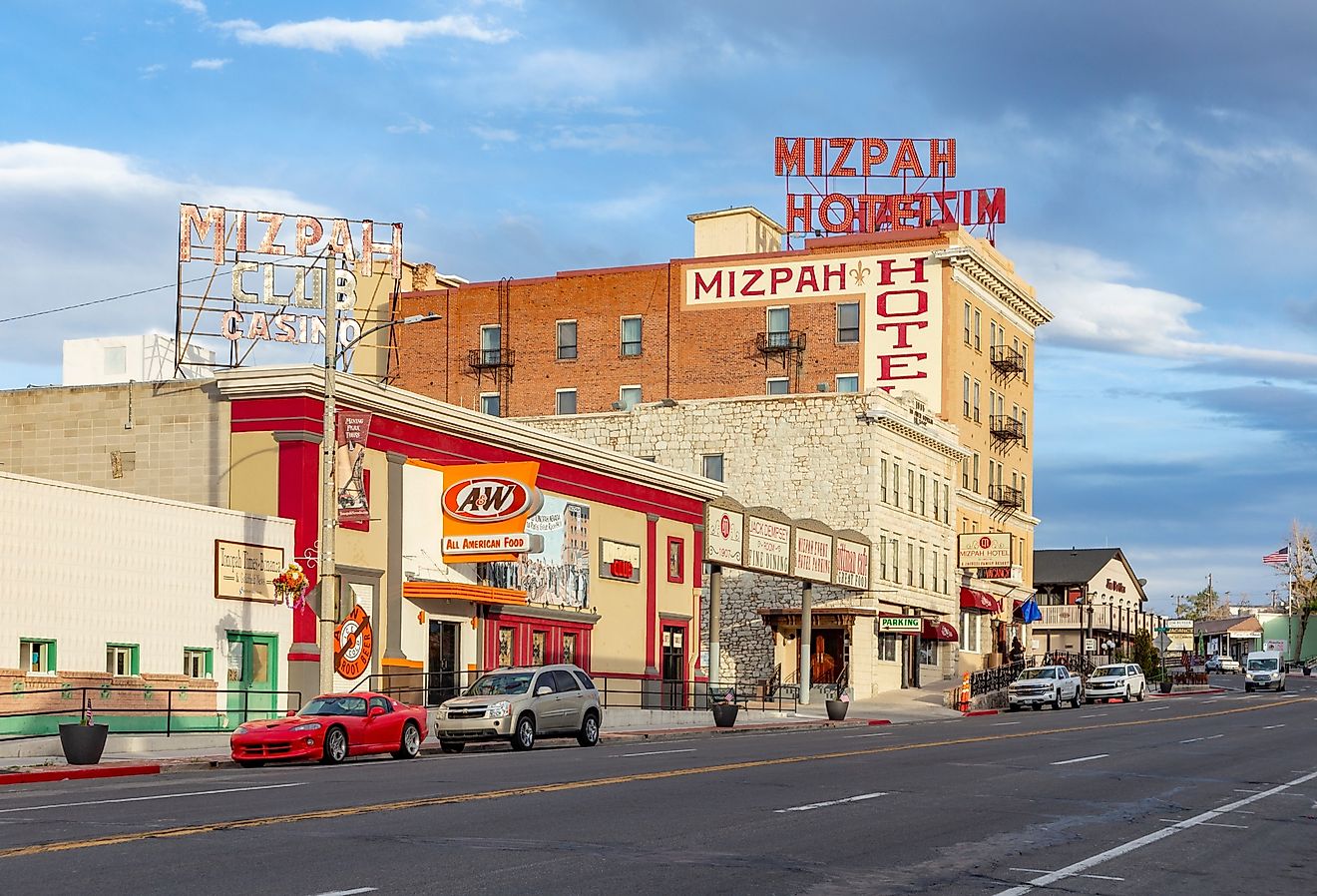Flags, Symbols & Currency of Bahrain

The flag of Bahrain was officially adopted on February 14, 2002, although the country gained its independence in 1971.
The flag of Bahrain is made up of two bands of different colors and different widths. The left band is white and takes up a little over one-third of the background. The band on the right-hand side is red and covers the remaining two-thirds of the background space. These two parts are separated by a zig-zag design that is made up of 5 white points, or triangle shapes. This design creates 4 whole triangles and two half-triangles on the red side. The toothy edge between the red and white is used to distinguish it from the official flag of Dubai, in the United Arab Emirates. The symbolism behind the colors used in the flag dates back to at least the early 19th century when the Arab countries signed the General Treaty of Peace with the UK. According to this treaty, the signing countries should include a band of white to represent their new, peaceful relationship. The red color of the flag is the traditional color for the flags of the Persian Gulf States and is said to represent the Kharijite sect of the Islamic religion. The five white points represent the Five Pillars of Islam, which are the basic guiding principles to living life according to faith. The flag of Bahrain is represented by a height: width proportion ratio of 3:5.
History of the Flag of Bahrain
The flag of Bahrain has undergone several changes throughout the years. In 1820, before the signing of the peace treaty, the flag featured a solid red background. A narrow white band was added in a vertical position on the left side in 1820. This design remained as the national flag for the next 112 years till 1932. It was in 1932 that the government added the zig-zag design between the two colors so that the flag would be unique from those of other Arabian countries. This zig-zag design had 28 white triangles, although no explanation is available about the symbolism these 28 points might have represented. Between 1972 and 2002, the number of points on the dividing line was changed to 8 and in 2002, the number was further reduced to 5.
Symbols of Bahrain
The National Coat of Arms of Bahrain

Bahrain's coat of arms is originally based on a design by Charles Belgrave in 1932. The coat of arms is a shield depicting the design of the country flag and is surrounded by a red and white mantling. This was added to the coat of arms after the UK withdrew from Bahrain and hence symbolized the nation’s newly acquired independence. The mantling is displayed around the shield without a helm or torse and the arms displayed with it became the arms of the dominion of Bahrain. In 2002 the design of the coat of arms were slightly altered. The white chief dancette was modified to include 5 indentations representing the five pillars of Islamic faith.
National Anthem
- Anthem Title: Baḥraynunā (Bahrainoma)
- Music Composer: Unknown
- Lyricist: Mohamed Sudqi Ayyash
- Date of Adoption: 1971
Baḥraynunā (Bahrainoma) is the national anthem of Bahrain. The "Arab fanfare" style of the anthem was adopted in 1971. Mohamed Sudqi Ayyash is the lyricist of the anthem. The composer of the anthem is still unknown, but it has been rearranged by singer and composer Ahmed AlJumairi and recorded with the London Philharmonic Orchestra. The original lyrics by Mohamed Sudqi Ayyash were changed in 2002 when the country became a kingdom from an emirate.
Baḥraynunā/بحريننا (Arabic)
بحريننا
ملكنا
رمز الوئام
دستورها عالي المكانة والمقام
ميثاقها نهج الشريعة والعروبة والقيم
عاشت مملكة البحرين
بلد الكرام
مهد السلام
دستورها عالي المكانة والمقام
ميثاقها نهج الشريعة والعروبة والقيم
عاشت مملكة البحرين
Our Bahrain
Our Bahrain,
Our King
(is) the symbol of harmony.
Its Constitution is high in the place and the position
Its Charter represents the way of Shari'a, Arabism
and the values
Long live the Kingdom of Bahrain!
(This is the) country of nobles
(and) cradle of peace.
Its Constitution is high in the place and the position
Its Charter represents the way of Shari'a, Arabism
and the values
Long live the Kingdom of Bahrain!
The Currency of Bahrain is the Bahraini dinar
The current official currency of Bahrain is the Bahraini dinar (BD or .د.ب). The term dinar is derived from the Roman word “denarius.”
The Bahraini dinar is divided into smaller units of 1000 fils. The dinar was first used on October 7, 1965, replacing the Persian Gulf rupee at a rate of 1 dinar = 10 rupees. It is the sole responsibility of the Central Bank of Bahrain to issue the dinar currency and monitor its circulation.
Coins
Coins in denominations of 100, 50, 25, 10, 5, and 1 fils were introduced in 1965. Some of them, such as the 1, 5, and 10 fils coins, were struck in bronze, while the rest were made of cupro-nickel metal. Later, the Bahraini coins were struck with brass instead of bronze and bimetallic material. Currently, the denominations used in Bahrain are 5, 10, 25, 50, 100 100, and 500 fils. The circulation of one fils coins was discontinued in 1966. The coins used today are made in different sizes. The five fils is 19 mm, 10 fils is 21 mm, 25 fils is 20 mm, 50 fils is 22 mm, and 100 fils is 24 mm wide. Their weights range between 2g and 6g.
Banknotes
The Bahrain Currency Board introduced the first notes used in Bahrain in 1965. They were of denominations 10, 5, 1, ½, and ¼ dinars. The 100 fils note was later introduced in 1967. Approximately six years later, the Bahrain Monetary Agency replaced the Bahrain Currency Board. Consequently, it issued a new batch of notes with denominations of 20, 10, 5, 1, and ½ dinars. This agency was renamed the Central Bank of Bahrain in 2006. Subsequently, in the year 2008, the agency introduced new notes. The Central Bank was determined to reflect the culture of Bahrain and its modern development on the new banknotes. Again on September 4, 2016, the Bahrain money-minting body introduced new 10 and 20 dinars notes with enhanced security features. The colors of the Bahraini notes are brown, peach, red, blue, and green. Apart from the Bahraini dinar, Saudi Arabian riyals are also accepted in Bahrain. However, the Saudi 500-riyal note is an exception and is typically only accepted by large airports, electronic shops, and supermarkets.
Historical Currencies of Bahrain
Since 1783, the A-Khalifa royal family had ruled Bahrain as a part of its hereditary emirate. From 1880 till its independence in 1971, Bahrain was a British protectorate. During this time, Bahrain had no currency of its own. Due to its proximity to the Indian subcontinent, Bahrain coins consisted of rupees, anna, and spices of India as its legal tender. In 1959, the Persian Gulf rupee – a special currency unit officially known as the ‘external rupee’ was issued. In 1965, the Persian Gulf rupee was replaced with the Bahraini dinar.

